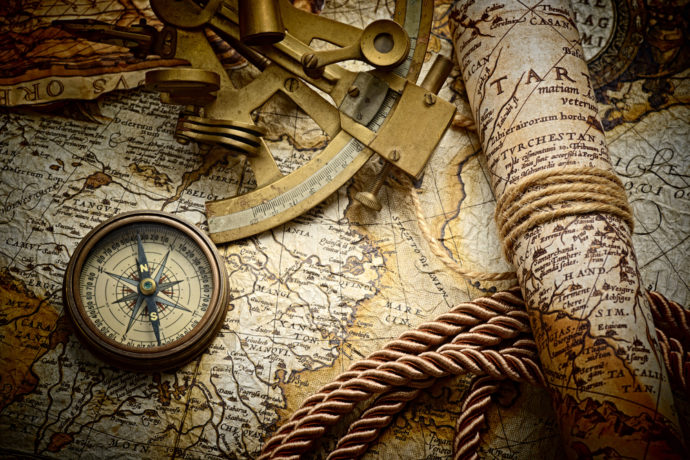
- The total world population was likely around 450 million in 1492.
- The average worldwide life expectancy was in the mid-30s. Many lived to be much older, and how long an individual could expect to live depended largely on factors such as where they lived, their profession, and which level of society they lived at.
- The Inca population was the highest among the cultures present in the New World in 1492, with around 12 million people. Amazon, Maya, and Aztec cultures also had very large populations at that time, ranging from 5 to 11 million people. The population of Portugal and Spain was near 10 million at this time.
- In the area that eventually would become Texas, at the time that Columbus reached the new world there were four major cultures living here, the Southeastern, Gulf, Plains, and Pueblos, each well suited to the ecosystem of their region.
- Wild animals were plentiful in the Americas. Passenger pigeons would travel in groups consisting of millions, which would darken the sky, and the bison population was in the tens of millions. Early expedition notes remark on how difficult it was to maneuver boats due to the large quantities of fish in the waterways.
- The largest domesticated animal in the Pre-Columbian Americas was the llama. Smaller animals, such as dogs, turkeys, ducks, and guinea pigs were also domesticated in various parts of the New World.
- There were no apples, oranges, or bananas in the Americas before Columbus arrived.
- There were no tomatoes, potatoes, or peppers in Europe, Asia, or Africa until they were brought back by Spanish conquistadors in the 1500s.
- Following Columbus’ arrival in the new world, there was a widespread exchange of plants, animals, technology, and ideas, known as the Columbian Exchange.
Brought to the Americas from Europe, Africa, and Asia
Coffee Cattle Bananas
Sheep Sugar Cane Pigs
Grapes Horse Onion
Wheat Citrus Fruit Peaches
Basil Almond Cabbage
Carrot Garlic Mango
Honeybees Apples Diseases
Brought to Europe, Africa, and Asia from the Americas
Cacao Turkey Squash
Pumpkin Tomato Peppers
Avocado Potato Corn
Beans Peanuts Tobacco
Cassava Vanilla Papaya
Rubber Pecan Sunflower
Zucchini Pineapple Agave
- The introduction of new types of domesticated animals had a big impact on those living in the Americas. The pig quickly expanded the food supply available, while the horse changed the hunting methods of many tribes. The horse also enabled many, particularly those living on the Plains, to become nomadic tribes, following the bison herds on horseback.
- In the Old World, it was the newly introduced crops that had the biggest impact. Maize, potatoes, and cassava became the primary foods in the diets of many. The new foods also enabled the population to double within two centuries.
The cuisine, traditions, and livelihood in much of the world today is a result of the Columbian Exchange. Without it, Italians would not be known for their tomato sauces, there would be no vineyards in California, apple orchards in Washington, citrus groves in Florida, or cattle ranches in Texas. Columbus Day has been unofficially celebrated for centuries, with the first celebration occurring in 1792, to commemorate the 300th anniversary of his voyage. It became a national holiday in the United States in 1937 and is presently seen as a day to celebrate exploration and the indigenous peoples of the Americas. All Eastex Credit Union branches will be closed on Monday, October 9th. You may continue to access your accounts via online and mobile banking during this time, and our ATMs are available 24/7.
Sources: History.com, The Indians of Texas by W.W. Newcomb, Jr. 2002 ed., Learnodo-Newtonic.com, and National Geographic



